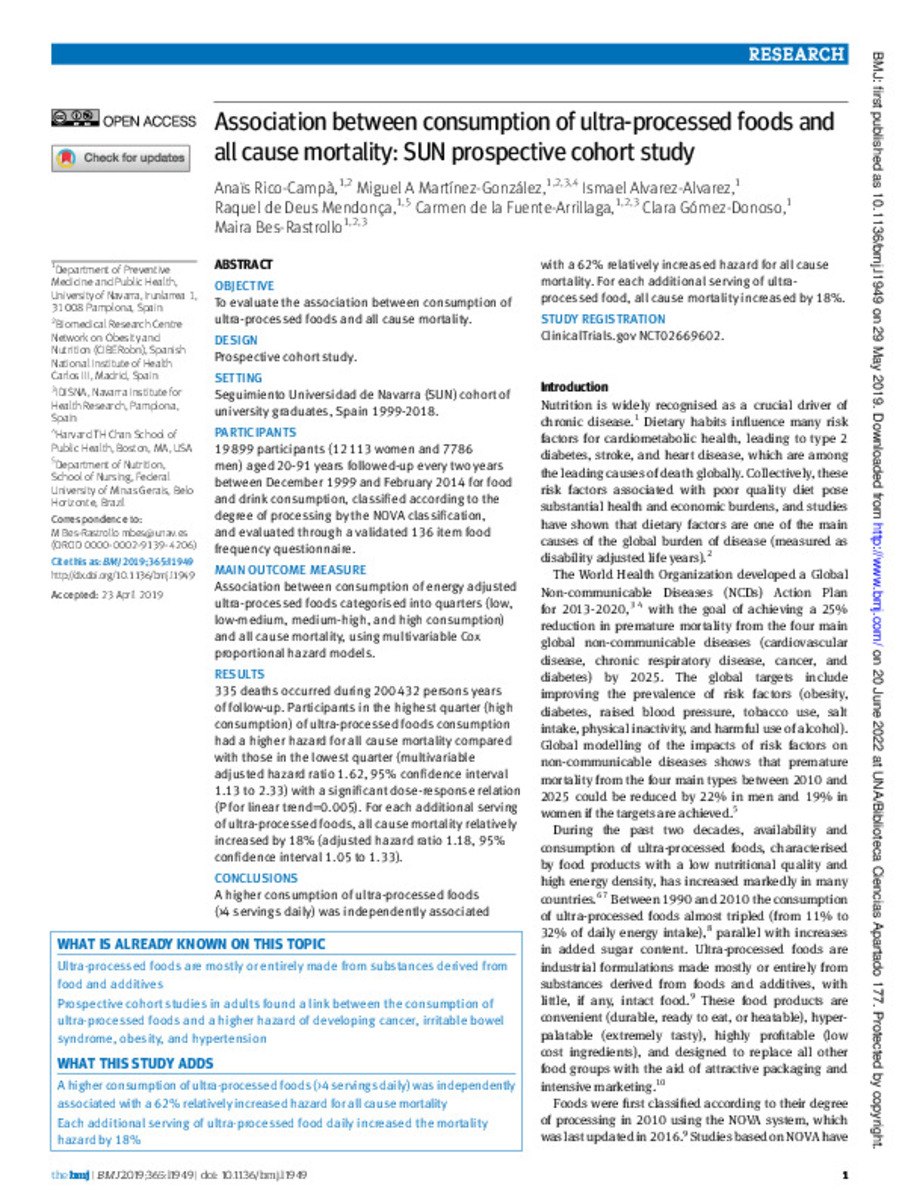Association between consumption of ultra-processed foods and all cause mortality: SUN prospective cohort study
Palabras clave :
Ultra-processed foods
Consumption
Cause mortality
NOVA classification
Fecha de publicación :
2019
Nota:
This is an Open Access article distributed in accordance with the
Creative Commons Attribution Non Commercial (CC BY-NC 4.0)
license, which permits others to distribute, remix, adapt, build upon
this work non-commercially, and license their derivative works on
different terms, provided the original work is properly cited and the
use is non-commercial. See: http://creativecommons.org/licenses/
by-nc/4.0/.
Cita:
Rico-Campà, A. (Anais); Martinez-Gonzalez, M. A. (Miguel Ángel); Álvarez-Álvarez, I. (Ismael); et al. "Association between consumption of ultra-processed foods and all cause mortality: SUN prospective cohort study". BMJ. 365, 2019, l1949
Aparece en las colecciones:
Estadísticas e impacto
0 citas en

0 citas en

Los ítems de Dadun están protegidos por copyright, con todos los derechos reservados, a menos que se indique lo contrario.









